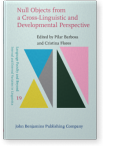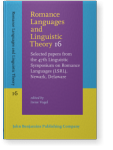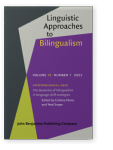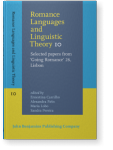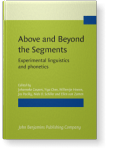Roberta D'Alessandro
List of John Benjamins publications for which Roberta D'Alessandro plays a role.
Book series
2023 A complex solution to an unsolvable problem? Epistemological issue: The dynamics of bilingualism in language shift ecologies, Flores, Cristina and Neal Snape (eds.), pp. 40–44 | Commentary
2018 Chapter 20. Metaphony as magnetism Structuring Variation in Romance Linguistics and Beyond: In honour of Leonardo M. Savoia, Grimaldi, Mirko, Rosangela Lai, Ludovico Franco and Benedetta Baldi (eds.), pp. 297–306 | Chapter
Metaphony in Romance poses a well-known problem for Element Theory, as it seems to involve lowering. [D’Alessandro and van Oostendorp (2016)] propose to solve this by assuming some suffixes are ‘ |A| Eaters’, absorbing the |A| element from the stem vowel without getting phonetically realized… read more
2016 When imperfections are perfect: Prosody, phi-features and deixis in Central and Southern Italian vocatives Romance Languages and Linguistic Theory 10: Selected papers from 'Going Romance' 28, Lisbon, Carrilho, Ernestina, Alexandra Fiéis, Maria Lobo and Sandra Pereira (eds.), pp. 61–82 | Article
Vocatives are often considered as exceptions to the regularity of language, and therefore often put “outside” of grammar, and pertaining instead to speech. In this paper, we wish to show that this conceptualization of vocatives is wrong: not only are they perfectly regular, but they give us… read more
2014 Phonetic aspects of polar questions in Sienese: An experimental approach Above and Beyond the Segments: Experimental linguistics and phonetics, Caspers, Johanneke, Yiya Chen, Willemijn Heeren, Jos Pacilly, Niels O. Schiller and Ellen van Zanten (eds.), pp. 174–188 | Article
This study provides empirical evidence for the monoclausal status of a specific
polar interrogative construction in Sienese, an Italian dialect spoken in Tuscany.
At first sight, this question type looks like a biclausal discourse including two
separate questions. There is however considerable… read more
